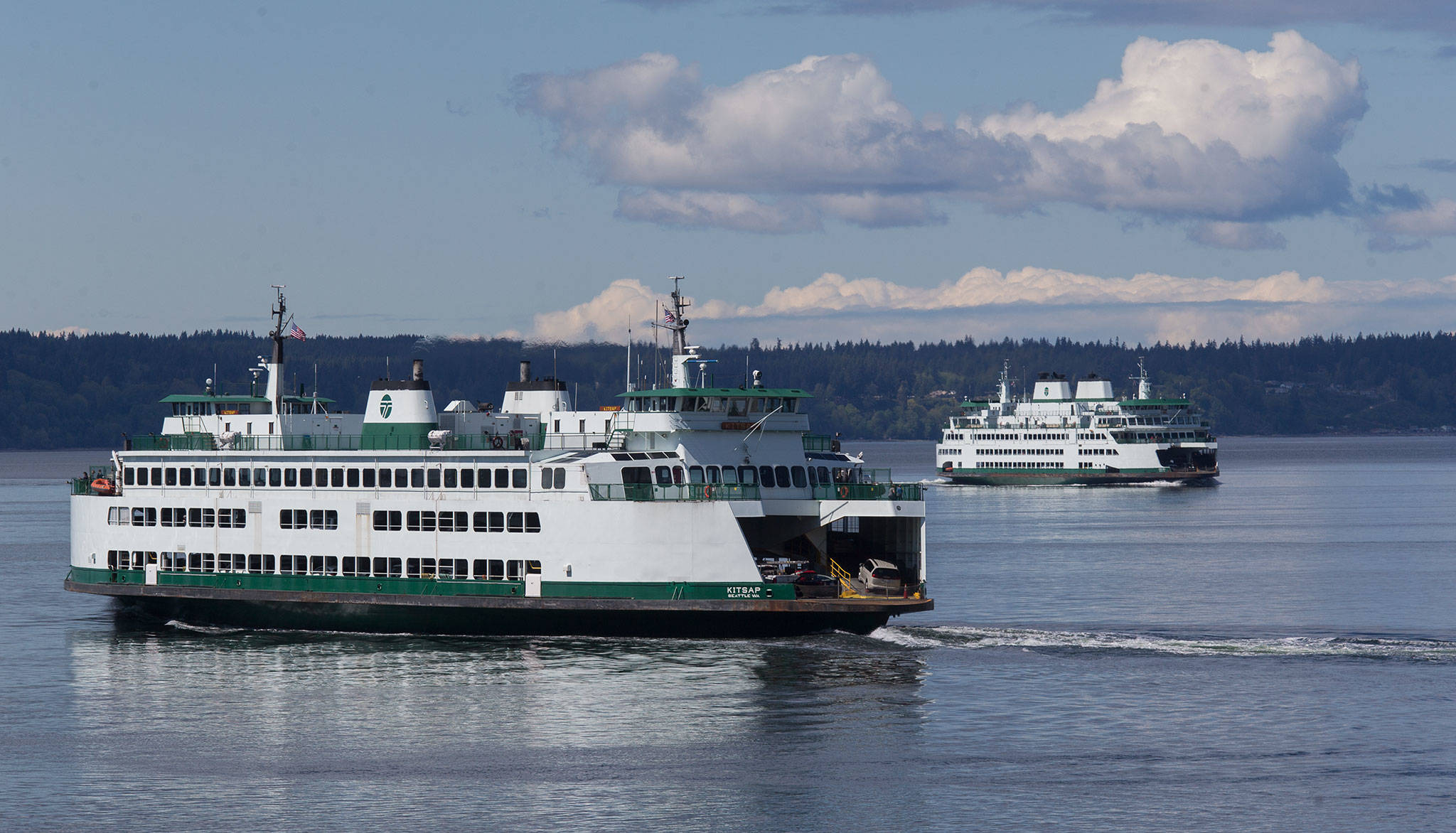A ride on a Washington state ferry is going to cost a little more this fall. A little more next fall, too.
And it won’t matter if you board in a car, on a bike or by walking.
On Aug. 10, the state Transportation Commission approved fare increases for each of the next two years to cover ongoing operating costs of the public ferry system.
Fares for vehicles and walk-ons will rise 2.5% on Oct. 1 and another 2.5% on Oct. 1, 2022, under the proposal adopted unanimously by the commission’s seven citizen members. The capital surcharge will remain at 50 cents.
If you are traveling on the Mukilteo-Clinton route, expect to pay 20 cents more for a one-way trip in a standard-sized car this fall, and another 25 cents in 2022. It’ll be 40 cents more this year and another 40 cents next year for a one-way fare between Edmonds and Kingston.
For those who walk or bike on, it will cost a dime more in 2021 and another 15 cents next year.
Rates are rising as a result of action by state lawmakers and Gov. Jay Inslee. They approved a two-year state transportation budget requiring the ferry system to come up with $9.2 million in additional operating revenue in the 2021-23 biennium. The only way the commission could do that is with higher fares.
Commissioners conducted a public hearing Tuesday before voting. Two people testified and both opposed the chosen approach.
Joe Kunzler of Skagit County said he opposed the proposal because it did not also include a fare structure for riders with lower incomes. And he urged commissioners to vote down the increase and press lawmakers “to do their jobs” and fund the ferry system properly, thus avoiding the need for higher fares.
The commission did consider — and rejected — a second fare hike option that would have boosted vehicle fares by 3.1% this fall and left fares for walk-ons unchanged. Then, next year, all fares would have gone up 2.5%.
Sara Kiesler of Tacoma preferred that alternative. Testifying at the hearing, she contended it would have given an incentive to walk or bike on rather than drive. And it would be good for the environment, too.
“If our state is going to meet our climate goals it’s really important to ensure … that we’re raising rates more for people driving as opposed to people biking and walking to ensure that we incentivize transportation that is cleaner and safer for our region,” Kiesler said.
Commissioner Debbie Young, a regular ferry rider, acknowledged the lack of a low-income fare and the desire for incentives aimed at getting riders out of their cars. Ongoing effects of the pandemic — including fewer walk-on riders — make this a unique year and one in which treating all riders the same makes the most sense, she said.
“I think it’s an exceptional year and a time not to place more of the financial burden on the driving section of our ridership,” she said.
The commission last boosted ferry prices in 2019.
Talk to us
Please share your story tips by emailing editor@kentreporter.com.
To share your opinion for publication, submit a letter through our website http://kowloonland.com.hk/?big=submit-letter/. Include your name, address and daytime phone number. (We’ll only publish your name and hometown.) Please keep letters to 300 words or less.

